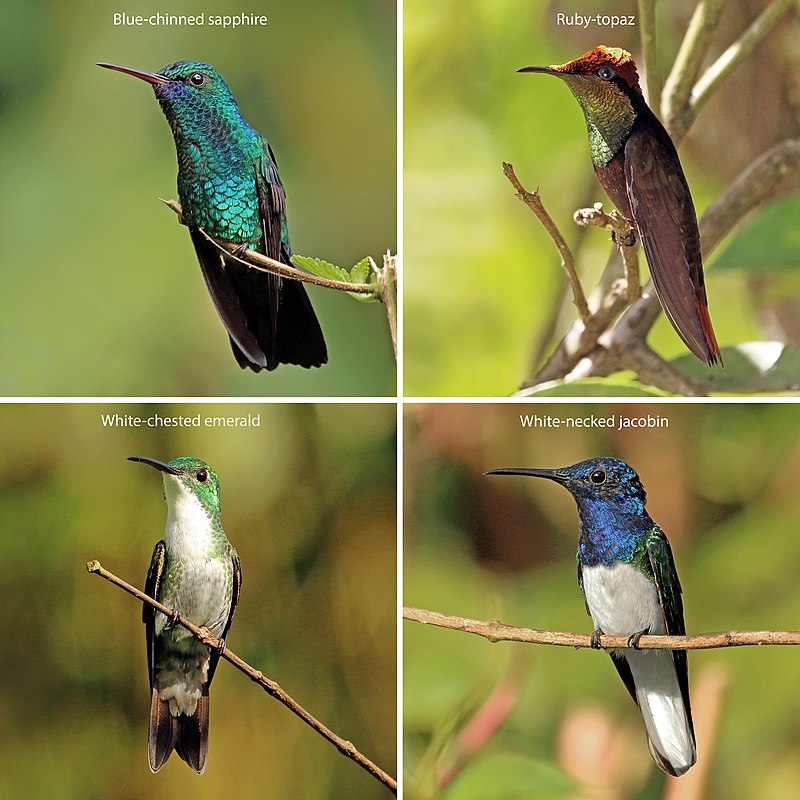
From Jillian Mock at Audubon:
Hummingbirds come in a jewel-like assortment of colors and are so dexterous, they can hover still for seconds and fly backward. They also have one of the most diverse avian families in the world, boasting about 350 known species across North and South America. Sunbirds, the prime nectar-feeding birds of the Old World, have fewer than 150.
But once upon a time, tens of millions of years ago, hummingbirds did zip around the hills and forests of Europe. According to Jim McGuire, it all started about 42 million years ago, when hummingbirds broke away from the swifts, their closest living relatives. McGuire, an integrative biologist at University of California Berkeley, calculated this date by examining genetic variation across living hummingbird species and using that information to piece together an approximate evolutionary timeline.
The plot, McGuire says, thickens at the 30- to 35-million-year mark. The oldest hummingbird fossils we’ve discovered come from this period—but they aren’t American.More.
They were found in Germany, and then more were found in Germany and others in Poland and France as well.
That‘s the trouble with a living history. It doesn’t stay put or wrap up neatly.
See also: Biogeography: Monkeys sailed the ocean blue?